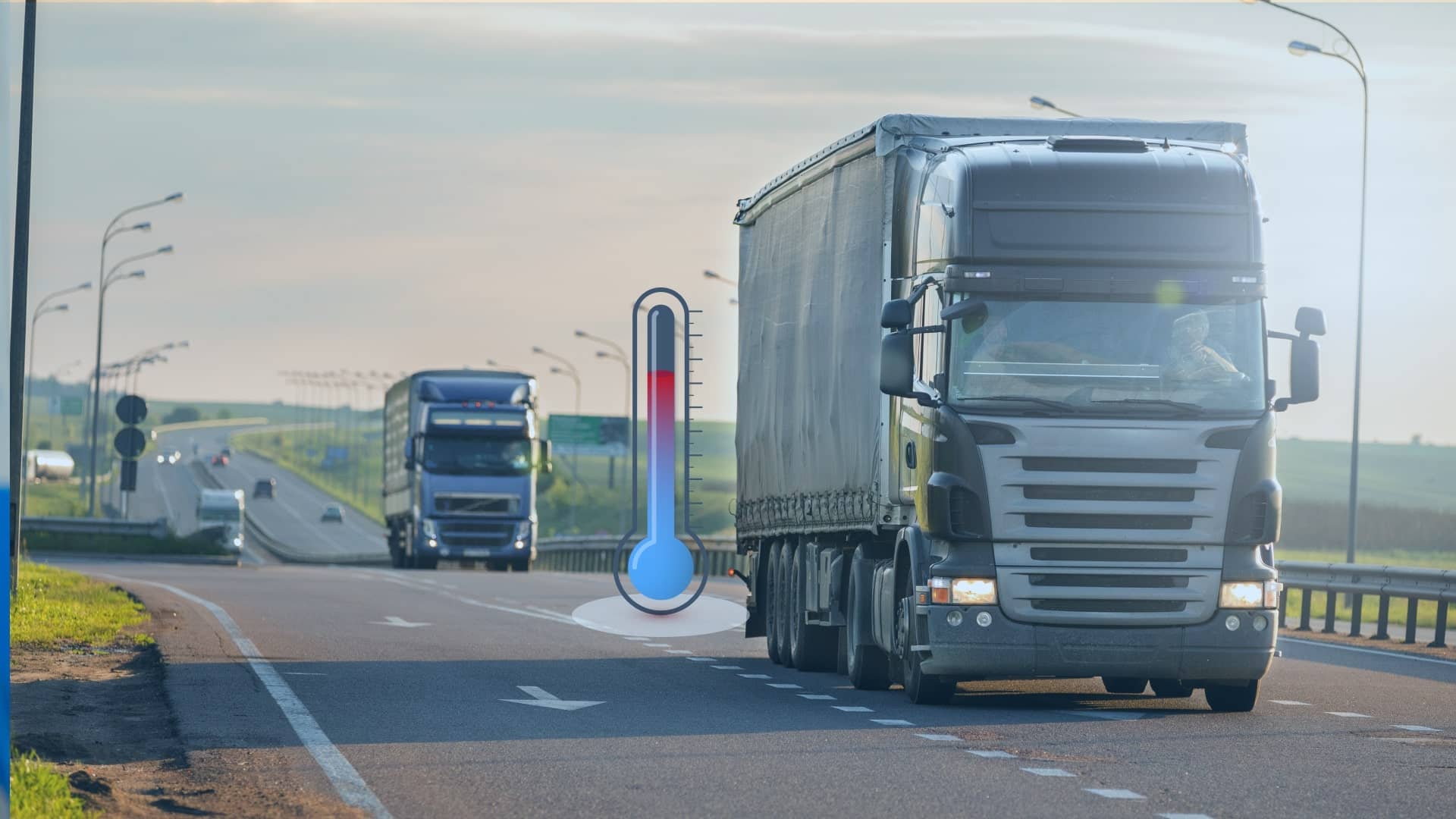Importance of Fleet Temperature Monitoring Software
 In today’s fast-paced logistics and transportation industry, maintaining optimal temperature conditions for goods is crucial. Fleet Temperature Monitoring Software stands as an indispensable tool in this endeavor. This technology not only ensures the integrity of temperature-sensitive goods but also enhances operational efficiency. In this comprehensive guide, we’ll delve into what Fleet Temperature Monitoring Software is, its necessity, key features to look for, and the advantages it offers.
In today’s fast-paced logistics and transportation industry, maintaining optimal temperature conditions for goods is crucial. Fleet Temperature Monitoring Software stands as an indispensable tool in this endeavor. This technology not only ensures the integrity of temperature-sensitive goods but also enhances operational efficiency. In this comprehensive guide, we’ll delve into what Fleet Temperature Monitoring Software is, its necessity, key features to look for, and the advantages it offers.
What is Fleet Temperature Monitoring Software?
Fleet Temperature Monitoring Software is a sophisticated system designed to continuously monitor and manage the temperature of goods during transportation. This software provides real-time data, enabling fleet managers to ensure that goods, especially perishables like food and pharmaceuticals, are transported within the required temperature ranges. It’s a blend of hardware and software solutions, including sensors, GPS, and data analytics tools, working together to maintain product quality and safety.
The Necessity of Fleet Temperature Monitoring
Why is Fleet Temperature Monitoring Software so crucial? The answer lies in its ability to safeguard the quality of temperature-sensitive goods. In the absence of proper temperature control, there’s a high risk of spoilage, quality degradation, or non-compliance with safety regulations. This software is pivotal for businesses that require adherence to strict temperature guidelines, offering peace of mind and reducing the risk of financial losses due to damaged goods.
Key Features to Look For
When selecting Fleet Temperature Monitoring Software, consider these essential features:
Real-Time Temperature Monitoring
Essential for Immediate Action: Real-time temperature monitoring allows you to respond promptly to any deviations from set temperature ranges. This feature ensures that corrective actions can be taken instantly, preventing spoilage or damage to goods.
Customizable Alerts and Notifications
Stay Informed, Always: Customizable alerts keep you updated on any critical temperature changes. You can set thresholds and receive notifications via email, SMS, or in-app messages, ensuring you’re always in the loop.
User-Friendly Interface
Simplicity Meets Efficiency: A user-friendly interface is vital for smooth operation. Look for software that offers an intuitive dashboard, easy navigation, and a clear display of data. This simplicity enhances user engagement and reduces the learning curve.
Detailed Reporting and Analytics
In-Depth Insight for Better Decisions: Comprehensive reporting tools provide valuable insights into temperature trends, compliance with regulations, and efficiency of the cooling systems. Detailed analytics aid in making informed decisions and long-term planning.
GPS Tracking Integration
Location and Temperature, Hand in Hand: Integrating GPS tracking with temperature monitoring allows you to track your fleet’s location in real-time while monitoring the temperature. This integration is crucial for route optimization and ensuring timely deliveries.
Scalability and Flexibility
Grow and Adapt with Ease: The software should be scalable to accommodate the growth of your fleet and flexible enough to adapt to changing business needs. This adaptability ensures a long-term solution that evolves with your business.
Robust Data Security
Protecting Your Critical Information: Ensure the software offers robust data security measures. Protection of sensitive data regarding your fleet and goods is paramount to maintaining trust and compliance with regulations.
Compatibility with Different Devices
Seamless Integration Across Platforms: The software should be compatible with various devices and sensors used in your fleet. This compatibility ensures seamless integration and avoids the need for additional investments in incompatible hardware.
Cost-Effectiveness
Balancing Quality with Budget: While quality is paramount, the software should also be cost-effective. Evaluate the total cost of ownership, including initial investment, maintenance, and potential savings from reduced spoilage or damages.
Exceptional Customer Support
Reliable Assistance When Needed: Choose a provider that offers exceptional customer support. Reliable technical support, training resources, and responsive customer service are crucial for addressing any issues promptly.
Advantages of Fleet Temperature Monitoring Software
The implementation of Fleet Temperature Monitoring Software comes with numerous benefits:
Enhanced Product Safety: It ensures that goods are always stored and transported within safe temperature ranges.
Compliance with Regulations: Many industries have strict regulatory requirements for temperature control; this software helps in adhering to these standards.
Reduced Spoilage and Waste: By maintaining optimal temperatures, the risk of product spoilage is significantly reduced.
Increased Customer Satisfaction: Delivering goods in perfect condition leads to higher customer satisfaction and loyalty.
Operational Efficiency: Automated temperature monitoring reduces the need for manual checks, thus improving operational efficiency.
Fields and places where Fleet Temperature Monitoring Software can be used
Transportation of Perishable Goods
- Food and Beverage Industry:
-
-
- Imagine fresh produce, dairy products, or frozen foods traveling across miles without losing their freshness. Fleet temperature monitoring software guarantees just that. It maintains optimal conditions within transport vehicles, ensuring that these perishable items reach consumers fresh and safe.
-
- Pharmaceutical Transport:
-
- Medications and vaccines often require strict temperature control. This software is indispensable in the pharmaceutical industry for transporting these sensitive products. It not only maintains the necessary conditions but also provides crucial data logging, essential for regulatory compliance.
Sensitive Cargo Transport
- Chemical Industry:
-
-
- Certain chemicals are temperature-sensitive and can become hazardous if not stored properly. The software plays a vital role in preventing accidents by continuously monitoring and adjusting the temperature during transport.
-
- Electronic Components:
-
- High-tech electronic components, often susceptible to extreme temperatures, need careful handling. The software ensures that these components are kept within safe temperature ranges, preventing damage and loss.
Specialized Applications
- Floral Industry:
-
-
- Flowers, needing specific climatic conditions, benefit greatly from fleet temperature monitoring. The software helps in keeping these delicate products vibrant and fresh until they reach their destination.
-
- Art and Antiques:
-
- Transporting art and antiques requires a stable environment. Fluctuations in temperature can cause irreversible damage to these valuable items. The software provides a controlled environment, preserving the integrity of these irreplaceable pieces.
Logistics and Supply Chain Management
- Warehouse Management:
-
-
- Beyond transport, the software is crucial in warehouses where temperature-sensitive goods are stored. It ensures that these items are kept in optimal conditions before and after transit.
-
- Data Analytics and Reporting:
-
- Moreover, Fleet temperature monitoring software provides invaluable data for logistics and supply chain optimization. It offers insights into temperature trends and helps in making informed decisions about transport routes and storage solutions.
Conclusion
In conclusion, Fleet Temperature Monitoring Software is a vital tool for businesses that transport temperature-sensitive goods. Its ability to ensure product integrity, compliance with regulations, and operational efficiency cannot be overstated. When choosing a system, focus on real-time monitoring capabilities, automated alerts, ease of integration, comprehensive data reporting,




